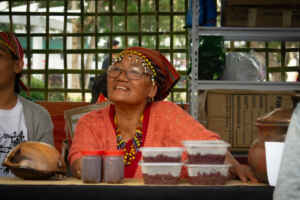NIA-CAR REPORTS NEARLY 50% IRRIGATION DEVELOPMENT ACROSS REGION
LA TRINIDAD, Benguet
Irrigation development across the region has reached 49.75 percent as of December 31, 2024, National Irrigation Administration – Cordillera Administrative Region (NIA-CAR) said. Out of the 185,406 hectares of potential irrigable land in the Cordillera, a total of 92,238.86 hectares have already been developed and provided with irrigation services, leaving 93,167.14 hectares still to be addressed.
Among the provinces, Abra posted the highest percentage of developed areas at 65.17 percent , followed by Ifugao at 59.88% and Kalinga at 56.09 percent. In contrast, Apayao recorded the lowest development percentage at 35.13 percent. The report categorized the service areas into several types: National Irrigation Systems (NIS), Communal Irrigation Systems (CIS) assisted by NIA, CIS assisted by other government agencies, and private systems.
A combined total of 67,511.71 hectares were developed through communal irrigation, while 21,349.15 hectares were under national systems. Kalinga province, which has the largest potential irrigable area at 44,190 hectares, has developed 24,788.38 hectares, while Abra, with 25,670 hectares, developed 16,729.20 hectares. Meanwhile, Mountain Province recorded the smallest total developed area among the provinces, with 10,214.78 hectares irrigated out of its 30,060 hectares potential, resulting in a 33.98% development rate.
Additional hectares in Apayao, Ifugao, and Kalinga are partly serviced by irrigation systems under the management of Region 2. For example, 2,192.96 hectares in Apayao are covered by the East Apayao-Abulog Irrigation System, and portions of Ifugao and Kalinga lands are irrigated by systems based in Cagayan Valley. Across the region, communal irrigation systems remain the largest contributor to the total developed area, reflecting the collaborative efforts between NIA, local government units, and private stakeholders. The NIA-CAR emphasized the need to continue expanding irrigation infrastructure to support farmers, boost agricultural productivity, and secure food sufficiency in the Cordillera.
Janieca Edejer / UB Intern
Environment
GARBAGE SEGREGATION, MAHIGPIT NA IPINAPATUPAD NG GSO
June 14, 2025
BAGUIO’S WET SPELL
May 19, 2025
SOLAR POWER EPEKTIBO NGAYONG TAG-INIT
March 16, 2025






